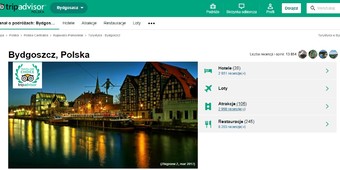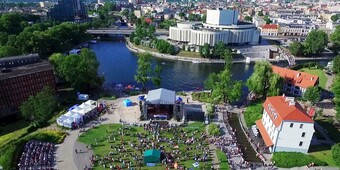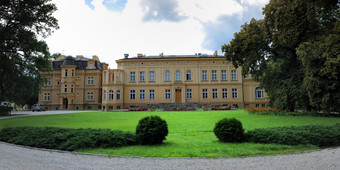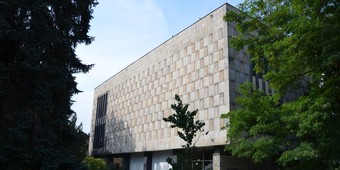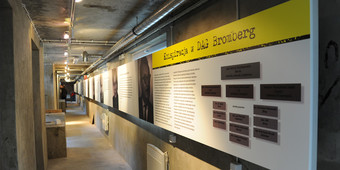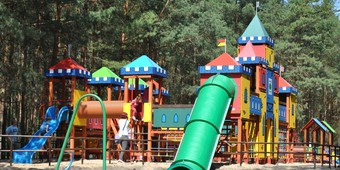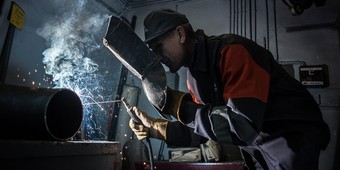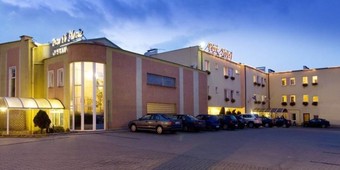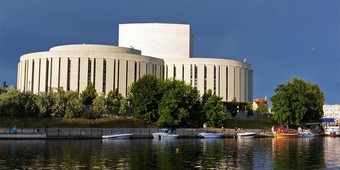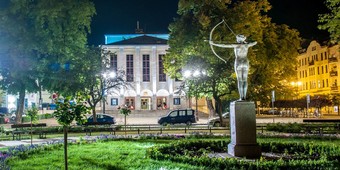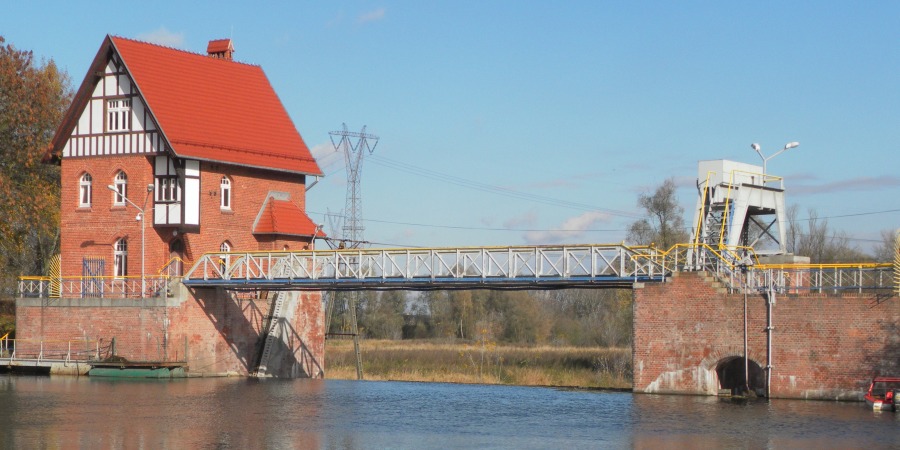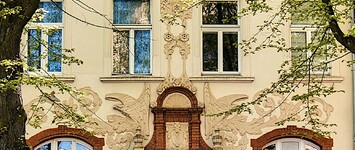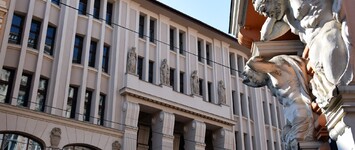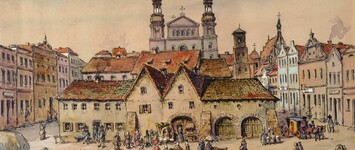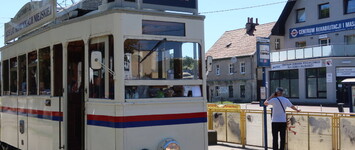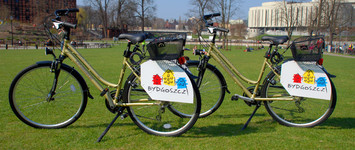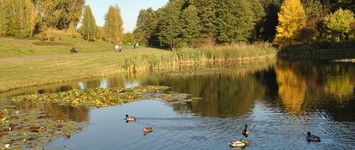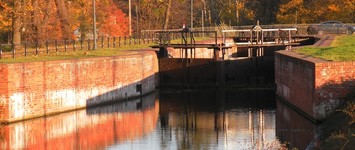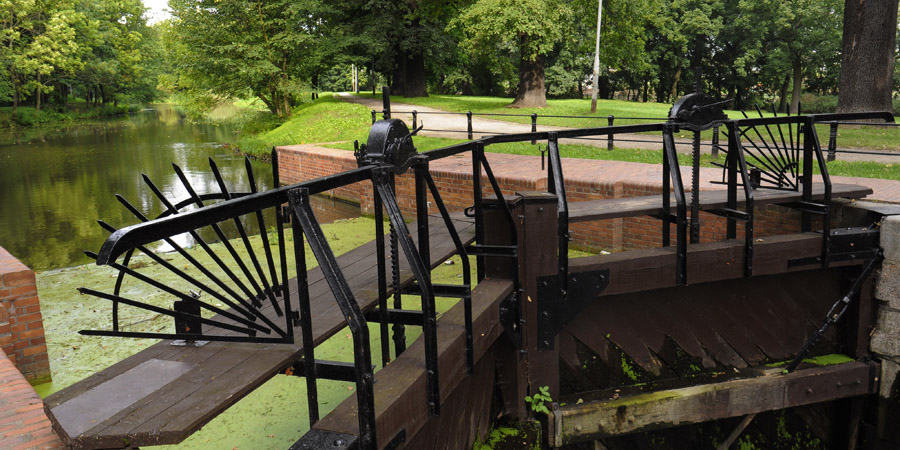
The E-70 water route will take you from Berlin to Bydgoszcz. Here, the water tourist will have an outstanding opportunity to appreciate the scenic views of the city located on the River Brda, the River Vistula and the Bydgoszcz Canal making up the Bydgoszcz Water Route Junction.
In this guide, you will see that Bydgoszcz is an important site on the water map of Poland (more The history of Bydgoszcz )
Download: The historic water facilities, Bydgoszcz [pdf, 5449 kB]
ON THE TRAIL OF THE HISTORIC WATER ENGINEERING FACILITIES
Ever since the beginning of its existence, Bydgoszcz has always been closely linked to water. The city’s nearly 1000-year-old coexistence with the water made the people of Bydgoszcz committed to all kinds of sailing-related occupations. One of the major dates in the city’s history is the year 1346 when Polish king Casimir III the Great issued the founding document for the town of Bydgoszcz granting its inhabitants the right to navigable trade.
A SIMPLIFIED OVERVIEW of river navigation development in Bydgoszcz
Żegluga Bydgoska S.A. – 1995
Państwowa Dyrekcja na Wiśle w Warszawie [State Vistula Management in Warsaw], Bydgoszcz Branch]– 1948
Bydgoszcz Lloyd (as a post-German company subject to Provincial Board of Liquidation Bureau) -1945
Polskie Drogi Wodne Żegluga Państwowa [Polish Waterways State Navigation Company], Directorship in Warsaw, Bydgoszcz Branch, 21 Grodzka Street – 1945
Bromberg Schleppschifffahrt Aktien Gesellschaft – 1939
Bydgoszcz Lloyd – 1920
Bromberg Schleppschifffahrt Aktien Gesellschaft – 1906
Bromberg Schleppschifffahrt Aktien Gesellschaft – 1891
Bromberger Dampfschiff
Otto Liedke – 1873
Friedrich Bumke Bromberg Schleppschifffahrt – 1871
A DROP OF HISTORY
From 15th to 17th century, the town of Bydgoszcz enjoyed a period of prosperity. Taking advantage of its excellent on the River Brda and the River Vistula, Bydgoszcz became one of the major towns of the Polish-Lithuanian Commonwealth. In those times, the townsmen’s rights to navigable trade on the Vistula were confirmed on multiple occasions. This led to well-developed and successful trading in grain, beer and ceramics with many other towns in the Commonwealth. Yet, the most important was the link to Poland’s “window to the world” - the port of Gdańsk on the Baltic Sea. Following desolation during war with the Swedes (in the famous Swedish Deluge) and epidemics, the population of Bydgoszcz was decimated and its status reduced. This state of affairs continued for over 100 years when Bydgoszcz along with its surrounding areas fell under the rule of Prussian king following the First Partition of Poland in late 18th century. Understanding the potential of the place, Frederic the Great decided to link the Odra and the Vistula rivers. In the years 1773–1774 the 26 km long Bydgoszcz Canal was constructed which triggered an intense development of the town turning it into a vibrant industrial and commercial centre. The 19th century saw the birth of important trading enterprises and shipyards. The Rivers Noteć and Brda and the Canal underwent renovation supported by land improvement.
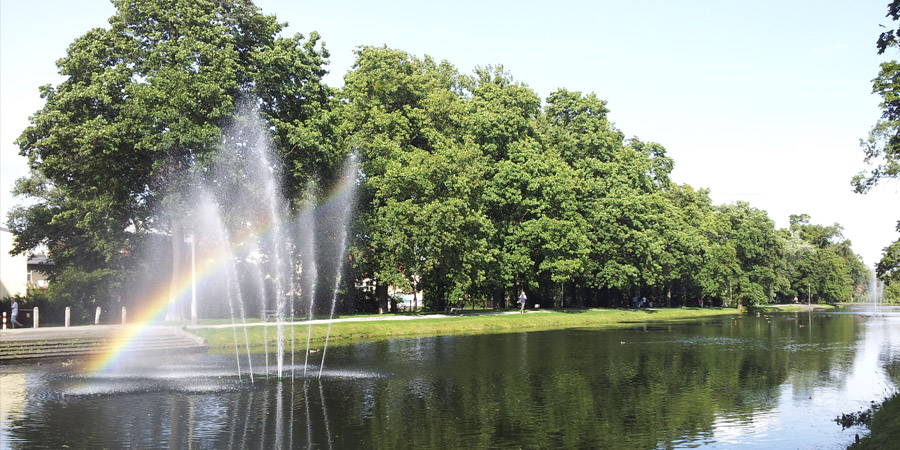
Bydgoszcz turned once again into a river harbour. In 1908, a new leg of the Bydgoszcz Canal was started and its completion in 1915 was a significant date in the history of the city’s river transportation. The modern locks made it possible for bigger vessels to come in, thus stimulating the growth of trade. After Poland had regained its independence and Bydgoszcz became Polish in 1920, the river trade lost its importance for a short time. The majority share of the German shipping company, the Bromberger Schleppschifffahrt Aktien Gesellschaft, became Polish, changed its name to Bydgoszcz Lloyd and took over all the earlier shipping companies’ assets. Over the 20 inter-war years the company swiftly gained the position of a major link in the national water transport system. After World War II, the company-owned river vessels were nationalised just as all other formerly private ships and barges.
THE ESSENCE OF THE BYDGOSZCZ WATER ROUTE JUNCTION
Nowadays, although the Bydgoszcz Water Route Junction has no economic importance, it is an element of the city’s identity important for its future. The great natural and historic qualities found in one place where the Rivers Brda and Vistula, the Bydgoszcz Canal and the Górnonotecki Canal along with smaller streams (Flis, Struga Młyńska, Potok Prądy) meet are an advantage promising an opportunity for transforming the city of Bydgoszcz into the water capital of Poland. The details of the Bydgoszcz Water Route Junction which are of specific significance are the water engineering facilities located within the city. One must, however, not forget the facilities that earned their place in the history of Bydgoszcz but are gone now.
Lock – A section of a waterway closed off with gates to reduce the water flow and enable vessels to sail between water bodies at different levels.
Weir – a facility dumping up water in a water body.
THE BYDGOSZCZ CANAL
In an account of the Bydgoszcz Water Route Junction it is essential to mention its historic water engineering buildings, including the locks of the New Bydgoszcz Canal such as - from the West - the Osowa Góra Lock, the Prądy Lock, the Czyżkówko and Okole Locks. They are in good working condition and are part of the E-70 International Waterway. Since the beginning of their operation they could accommodate even the largest, over 400-ton, barges navigating western European rivers at the time. All the locks are uniform in their length – 57.4 m and width - 9.6 m. The only difference between them is the height to which they are elevated. The first two locks: Osowa Góra & Prądy were built in 1773–1774 but their present shape was determined during the refurbishment works in 1908–1915 which enabled their elevation up to 3.55 and 3.82 m respectively. They are brick-faced single chamber locks made of concrete. The steel valve sluice gate and the bottom auxiliary sluice gate are manually operated. The vessel lock traversing operation in each of the sluices does not take longer than 20 minutes.
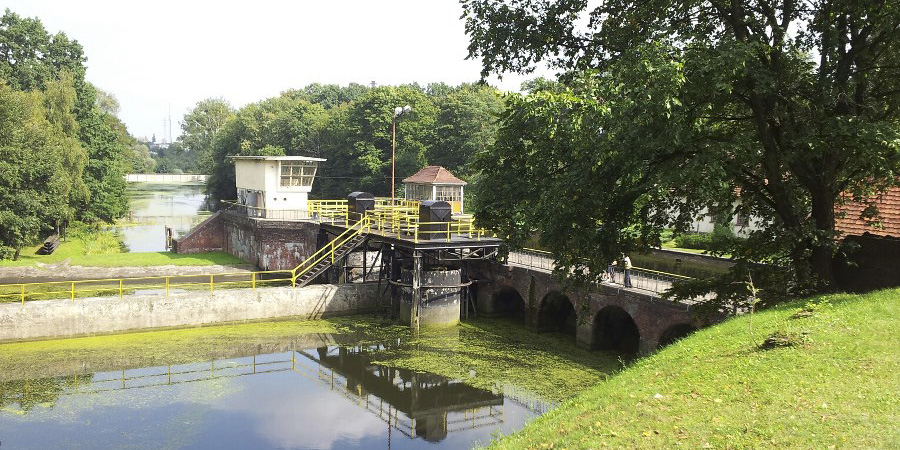
Sailing eastbound, there are two other water engineering facilities which are almost identical. The Czyżkówko and Okole Locks were built at the time of the Bydgoszcz Canal renovation, located on a new 2-km-long excavation from 1908–1915, replacing the former 5 sluices on the old Bydgoszcz Canal. Their task was to eliminate the over 15 m difference of levels. The Czyżkówko Lock raises us by 7.52 m within nearly 30 minutes, while the Okole Lock by 7.58 m within about 20 minutes. Both locks are made of concrete with brick facing. Their characteristic feature is their unique saving reservoirs which reduce the amount of water needed for the sluice to operate by a multiple re-usage of the same water. This is a huge advantage for the operations of the Bydgoszcz Canal which is permanently short of water. The steel valve and the bottom auxiliary sluice gates are electrically operated yet, in case of failure, it can be done manually. During World War II the new canal navigation was discontinued due to the destruction of the Czyżkówko Lock. In order not to cancel ship traffic, the Old Canal was reopened for the duration of the new canal reconstruction. In the 60s, the Okole Lock was the filming site for the massively popular TV series Czterej pancerni i pies [Four Tank-Men and a Dog]. The most spectacular was the scene of blowing up Sluice No. 3 by one of the heroes of the film with a Panzerfaust. But it must be added here that the lock itself was not damaged – the film used a wooden dummy prop. It is worth mentioning that it was not the only lock used for the film shooting. Sharp-eyed TV viewers could notice the sites next to the lock in Grottgera Street, which is gone today, and the lock in the Fish Market.
THE OLD BYDGOSZCZ CANAL
The locks from the turn of 18th and 19th centuries on the Old Bydgoszcz Canal, surrounded by a beautiful park, are well worth mentioning. It is an exceptional place owing to its interesting history and unusual nature. The origins of the park are linked to the inspection works by the Canal Inspector Ernst Conrad Peterson who in early 19th c. began a long-term programme of tree planting along the banks of the Canal. And so we have here black poplars, horse-chestnuts, elms, European beeches and lindens. The idea was continued by General Wincenty Aksamitowski in 1807-1812 and then by the City Beautification Society. By the mid-19th c., the green strip along the Canal became the showpiece of Bydgoszcz and played the role of the city’s leisure and sporting grounds with restaurants, dance floors, open-air sites for painters, exhibition venues, and theatres offering light repertory. In winter, the Canal turned into a popular ice rink. The Canal was a busy entertainment site and one of the most popular attractions of the city in the inter-war years as well. It was after World War II that the Old Canal started to lose its importance due to the many new green areas arranged in the city. In the 1970s, the Canal section from today’s Rondo Grunwaldzkie roundabout to the inlet into the River Brda was buried cutting it off from the city centre.
The turn of 20th and 21st centuries proved favourable for the green strip along the Canal. Cultural life is being gradually restored here. Both the citizens and the city management have been turning towards the water by renovating the Canal bank in the 1990s, listing the Bydgoszcz Canal with the Provincial Register of Historic Buildings and Monuments in 2005 and recently carrying out the works under the REURIS Project.
Thanks to Mr. Sebastian Malinowski’s initiative, in 2006 the Museum of the Bydgoszcz Canal was arranged on the grounds of Secondary School No. 3 which is located only 60 meters away from the original bed of the Old Bydgoszcz Canal (2021 - the new seat of the museum - [Street] Staroszkolna 10).
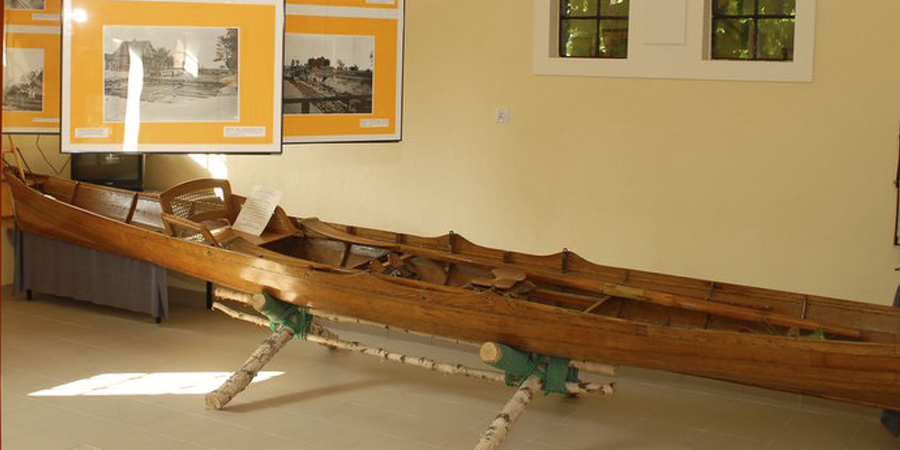
THE RIVER BRDA
Sailing eastbound from the Okole Lock, we will be attracted by 19th c. railway bridges. The first of the three, to the north, is a three- span, steel and concrete structure leads to the way from Bydgoszcz to Poznań through Wągrowiec. The next – a brick, vaulted, five-span structure is on the way from Katowice to Tczew. The third and oldest, built in 1849–50, is also a brick, vaulted, five-span structure and runs in the direction of Krzyż.
THE BRIDGES
In Bydgoszcz, there are about 50 various traffic and foot bridges over the River Brda and the Bydgoszcz Canal.
Sailing across Bydgoszcz down the River Brda, we pass under the Queen Jadwiga Bridge, past the massive building of the former Board of Directors of the East Prussian Railway from the late 19th c., and arrive at the City Lock. Since the construction of the Bydgoszcz Canal, the City Lock caused the most problems due to the very difficult geo-technical conditions of its site. In 1882-1884, the wooden City Lock was replaced by a unique trapeze-structure sluice, the only such facility in the world. The trapeze-structured (also called a bag-structure) sluice was named the Bydgoszcz Scylla and Charybdis by Walenty Winida, the author of the most complete monograph of the Bydgoszcz Canal, because of the many complications it brought to the vessel traffic. Interestingly, the barges entered the lock sterns-in which was very difficult because of the necessity of turning them round prior to entry. It was not until the refurbishment of the Bydgoszcz Canal in 1908–1915 that the sluice construction was replaced. This is the structure we can see today: a single-chamber, dock-structure sluice measuring 57.4 m x 9.6 m raising the water up to the level of 3.33 m. The lock passage takes about 20 minutes for each vessel.
Two weir plants play the major role in banking up the water in the centre of the city – the Ulgowy and the Farny. Their task is to let the water through from Młynówka Stream to the River Brda. The water is brought up to about 3.36 m high. The manually operated Ulgowy Weir was built in 1920 as a concrete structure, with one passage and five split gates. The Farny Weir was constructed in 1899 and then modified three times (in 1929, 1970 and 1996) with general overhaul in the years 2014-2015. At present, it is a two-span concrete dock. The weir is sealed with two steel slide-split gates, operated electro-mechanically with a manual option. It must be emphasised that the latest modification introduced a white water rafting course in the city centre, one of very few in Europe.
MILL ISLAND
There are three hydroelectric power stations in Bydgoszcz with a total output of about 4.5 MW electric power. They are the Smukała power plant, the Mewat power plant in Czersk Polski and the Kujawska power plant, which has a collection of technical devices and equipment.
One of Bydgoszcz’s greatest attractions is the revitalised Mill Island and Bydgoszcz Venice. It is one of the most exceptional and charming places in Bydgoszcz. What makes it unique is its location in the heart of the city, just a few steps from the Old Market Place. The Island was the industrial centre of the town for several centuries since Medieval times. It was there that the Royal Mint, which operated from 1594 to 1688, with several breaks, was located. Today, Mill Island and Bydgoszcz Venice is a green oasis in the city centre. Its buildings date mostly from the 19th c., however, the cellar of the White Granary dates back to the 15th c. The water, foot bridges, former mills (turned into museums), the growing number of restored old houses casting their reflections in Młynówka Stream (this part of town is called the Bydgoszcz Venice), the well-kept greenery – all this, along with crowds of Bydgoszcz locals and numerous tourists participating in frequent open-air events, build up the atmosphere of a festive river island. The nearby The Cathedral of Bydgoszcz, the oldest church in town, casts its shadow over the island with five museums and the Opera Nova, host to the Bydgoszcz Opera Festival. Once we go under the Sulima-Kamiński Bridge, we are able to spot today’s pride of Bydgoszcz: the Granaries and the Man Crossing the River, tight-walking on a rope assisted by a swallow.
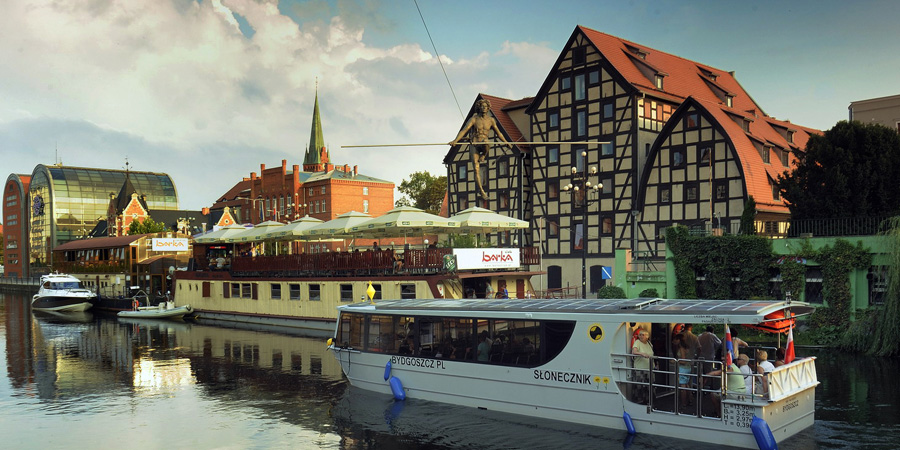
It was only several dozen years ago that many barges and tug boats came to the centre of the city, of which the LEMARA—an engineless barge moored to the Fish Market—is a reminder. The beautiful granaries and warehouses in the centre of Bydgoszcz and the Bydgoszcz Lloyd Palace, which was the seat of the shipping companies which operated in Bydgoszcz throughout the 20th century, are further relics of the harbour in the town centre. Across the river, opposite the Fish Market, there is the neo-Gothic building of the Polish Post Office.
Sailing on eastbound along the River Brda, we go under the Bernardyński Bridge whose neighbour is a mansion which has been the base of many rowing clubs since the beginning of the 20th century.
The beautiful River Brda, a right-hand tributary of the Vistula, is a treasure to our city. It flows along a length of 245.3 km to form one of the most beautiful tourist routes in Poland. It is exactly along this route that Pope John Paul II, then Karol Wojtyła, did his canoeing tours.
Our adventure with the Bydgoszcz Water Route Junction finishes on the Czersko Polskie water threshold composed of two sluices: Brdyujście and Czersko Polskie, a roll weir, a fish pass next to the roll weir, a hydro-electric power plant in the weir engine room, and a hydro-electric power plant on the right bank of the weir. The Brdyujście Sluice was constructed in 1879, when the city section of the Brda was being canalised. Measuring 57.4 m x 18 m, it levelled the 2.3 m height difference and was built of bricks. Today, it is out of operation having been replaced by the Czersko Polskie Lock in 2002. The new single-chamber sluice where the Brda flows into the Vistula has got a 115m x 12m dock-type reinforced concrete structure thus making it possible for the vessels to pass over 4.9 m height difference.
1. Osowa Góra Lock
2. Prądy Lock
3. Gwiazda Marina
4. Czyżkówko Lock
5. Lock VI on the Old Bydgoszcz Canal
6. Lock V on the Old Bydgoszcz Canal
7. Bydgoszcz Canal Museum
8. Lock IV on the Old Bydgoszcz Canal
9. Okole Lock
10. Railway bridges
11. Queen Jadwiga Bridge
12. City Lock
13. Ulgowy Weir
14. The Bydgoszcz landing stage
15. Mill Island
16. Historic signposts
17. Międzywodzie – the between-water-area
18. Farny Weir
19. Kujawska hydro-electric power plant
20. Sulima-Kamiński Bridge
21. Brdyujście Lock
22. Czersko Polskie Lock
23. Brdyujście regatta route
24. Czersko Polskie roll weir
Pokaż Historic water facilities, Bydgoszcz on a bigger map
THE MARINAS
Sailing from Berlin to Bydgoszcz, the Bydgoszcz Water Route Junction offers good standard landing stages and havens to moor. The first of them is the Gwiazda Marina next to the Gwiazda Sports Club at the point where the old and the new Bydgoszcz Canals meet. The club facilities in Bronikowskiego Street available to the tourists include a kitchen, laundry, bathrooms and recreation grounds.
In 2013, the Bydgoszcz Marina on the Mill Island opened. A modern building designed by the Rokiccy Architect Studio is much acclaimed by architecture specialists. The facility serves various purposes, offering services including sports, leisure, accommodation and catering.
DISTANCES IN KILOMETERS
| Name | Distance [km] | Water stream | Level Difference |
| Czersko Polskie Lock | 1.4 | The River Brda | 4.90 |
| Sulima-Kamiński bridge | 11.7 | The River Brda | not applicable |
| Farny Weir | 11.8 | The River Brda | 3.36 |
| Bydgoszcz Marina | 12.3 | The River Brda | not applicable |
| Ulgowy Weir | 12.2 | The River Brda | 3.36 |
| City Lock | 12.4 | The River Brda | 3.33 |
| Railway bridges | 13.5 | The River Brda | not applicable |
| Okole Lock | 14.8 | The Bydgoszcz Canal | 7.58 |
| Czyżkówko Lock | 16.0 | The Bydgoszcz Canal | 7.52 |
| Bydgoszcz Gwiazda Marina | 16.1 | The Bydgoszcz Canal | not applicable |
| Prądy Lock | 20.0 | The Bydgoszcz Canal | 3.82 |
| Osowa Góra Lock | 21.0 | The Bydgoszcz Canal | 3.55 |
IMPORTANT ADDRESSES
Contacts and opening hours of tourist facilities for those visiting the Bydgoszcz Water Route Junction:
Bydgoszcz Information Centre
www.visitbydgoszcz.pl
2 Batorego Street, 85-104 Bydgoszcz
Ph. +48 52 340 45 50
Monday-Friday: 9:00 a.m. –6:00 p.m.
Saturday-Sunday: 10:00 a.m. –4:00 p.m.
Bydgoszcz Water Tram (more Bydgoszcz Water Tram )
https://visitbydgoszcz.pl/en/explore/what-to-do/1443-water-tram
Phone: +48 723 304 955
Bydgoszcz Gwiazda Marina
45 Bronikowskiego Street, 85-350 Bydgoszcz
– when mooring, a night watch is available
Phone: +48 52 379 78 01
Bydgoszcz Marina
www.przystanbydgoszcz.pl
2 Tamka Street, 85-102 Bydgoszcz
Phone: +48 52 585 96 01
Bydgoszcz Canal Museum
www.muzeumkanalu.pl
3 Nowogrodzka Street, 85-208 Bydgoszcz
Phone: +48 693 765 075
Closed Saturdays, Sundays, holidays,
Visit possible on appointment by phone.
Working days 8:30 a.m. –3:30 p.m.
The Water Supply System Museum
www.mwik.bydgoszcz.pl
The Water-Tower
- 1 Filarecka Street
Historic Water Supply Pump Hall
- 242 Gdańska Street
Phone: +48 667 661 541, +48 663 235 650
Lifeguard Bydgoszcz
www.wopr.bydgoszcz.pl
Phone +48 52 346 22 69, Mobile: +48 660 412 240
The Lock opening hours vary depending on the season.
Please contact the particular lock by phone.
The Bydgoszcz Canal Locks
www.poznan.rzgw.gov.pl
Okole – Phone: +48 52 322 56 20
Czyżkówko – Phone: +48 52 37 97 572
Prądy – Phone: +48 696 721 036
Osowa Góra – Phone: +48 52 37 22 042
Locks on the River Brda
www.gdansk.rzgw.gov.pl
Czersko Polskie Lock – Phone: +48 52 343 51 11
City Lock – Phone: +48 52 322 37 01
Inland Navigation Office in Bydgoszcz
1/3 Konarskiego Street, 85-066 Bydgoszcz
Phone: +48 52 32 04 230
Water Supervision in Bydgoszcz
82 Łowicka Street, 85-776 Bydgoszcz
Phone: +48 52 365 21 90
The Noteć River Basin Management in Bydgoszcz
1 Marcinkowskiego Street, 85-056 Bydgoszcz
Phone: +48 52 37 68 450









